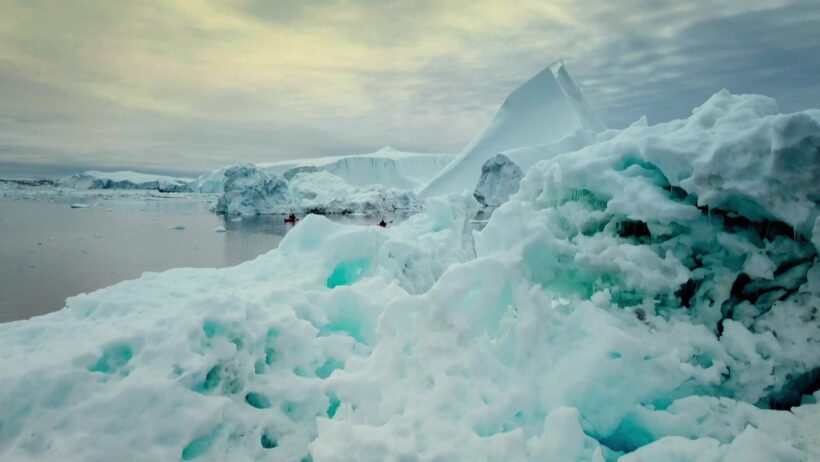Polar climate, often evoking images of vast, icy landscapes and the haunting calls of majestic wildlife, represents an extraordinary segment of Earth’s diverse ecosystems. This climate type can be understood as a natural tapestry woven from the threads of low temperatures, unique precipitation patterns, and geographical characteristics. The polar realms encompass two primary regions: the Arctic, encircling the North Pole, and Antarctica, dominating the southern hemisphere. Each region boasts its own distinctive features, yet they share commonalities that render them emblematic of Earth’s extremes.
One of the defining characteristics of polar climate is its frigid temperature. Typically, the average annual temperatures in these regions measure below freezing, with winter temperatures plunging dramatically. The Arctic tundra experiences temperatures hovering around -30°C, while Antarctica can plummet to an astonishing -60°C or lower. These low temperatures create a thermal blanket of ice, obscuring the land beneath. Ice is not merely a physical entity but acts as a vital component in Earth’s climatic equilibrium, reflecting solar radiation and thus regulating global temperatures.
The interplay of sunlight and the polar climate cultivates a fascinating phenomena known as polar night and midnight sun. During winter, polar regions are shrouded in darkness, where the sun does not rise above the horizon for months. This prolonged absence of daylight envelops the land in an almost ethereal stillness, conducive to deep introspection and contemplation. Conversely, the summer months usher in a continuous glow, where the sun’s incessant presence creates a surreal landscape bathed in golden hues, challenging the boundaries of the natural day-night cycle.
Precipitation is another pivotal element in characterizing polar climates. Contrary to popular belief, these regions are not as barren as often imagined; instead, they receive limited precipitation, primarily as snow. This snow serves as a crucial reservoir of water, slowly releasing moisture into the ecosystem as it melts during the brief summer. Glaciers, the behemoths of the polar landscape, play a pivotal role in this cycle by storing vast amounts of freshwater. The gradual calving of these glaciers into the surrounding seas marks the inception of complex marine ecosystems that thrive in what is often perceived as desolation.
Life in the polar climate, despite its daunting challenges, is exuberant and remarkably adaptable. Organisms have evolved unique physiological traits to endure the cold, exemplifying nature’s resilience and ingenuity. The flora, primarily consisting of lichens, mosses, and hardy grasses, has adapted to maximize energy absorption from the scant sunlight while withstanding brutal winds. These plants create a lush green carpet in the brief summer, enabling a flurry of animal activity.
Among the fauna that populate these regions, the iconic polar bear stands as a luminous beacon of adaptation. With its thick blubber and fur, the polar bear exemplifies the pinnacle of cold-weather evolution. It glides effortlessly across ice floes, hunting seals—its primary food source—with an uncanny blend of power and grace. This apex predator not only symbolizes the wildness of the Arctic but also serves as an indicator of climate health. A decline in its population signals broader implications for the ecosystem, particularly in light of climate change.
In the depths of Antarctica, life is equally tenacious, albeit different in form. The penguin colonies are a breathtaking spectacle. Adelie and Emperor penguins, clad in their tuxedo-like plumage, exhibit extraordinary social behaviors. They huddle together for warmth amidst the unforgiving cold, an act emblematic of cooperation and community in a harsh environment. The Antarctic krill, a minuscule yet vital component of the marine food web, thrives in the icy waters, providing sustenance for larger species and underpinning the oceanic ecosystem.
The cultural significance of polar climates cannot be overstated. Indigenous peoples, such as the Inuit, have existed in harmony with the demanding Arctic conditions for millennia. Their deep knowledge of the land and sustainable practices demonstrate a profound understanding of their environment, embodying the intricate balance between humans and nature. The narratives etched into their cultures reflect the profound connection to the icy landscapes, offering wisdom that resonates with the modern discourse on climate stewardship.
However, the allure of polar environments is increasingly threatened by climate change. The warming climate accelerates the melting of ice caps and glaciers, posing urgent concerns for biodiversity and global sea levels. The Arctic is warming at more than twice the global average, leading to increasingly unstable weather patterns, loss of habitat, and significant declines in species populations. This dire reality compels an immediate and collective response to combat climate change.
As stewards of the planet, it is incumbent upon society to recognize the fragility of these magnificent regions and to advocate for their preservation. Initiatives that promote sustainability, conservation, and education are vital in combating the impacts of climate change. Individuals can engage in eco-friendly practices, support climate policy reforms, and participate in biodiversity conservation efforts, thereby contributing to the protection of these remarkable polar climates.
In conclusion, polar climates serve as a glaring reminder of nature’s splendor and fragility. They encapsulate extremes both in temperature and ecological adaptation, fostering unique landscapes teeming with life against formidable odds. Embracing the challenge of climate change with concerted action is essential to safeguard these polar realms. In doing so, we not only protect a vital component of our planet’s health but also honor the perpetual dance of resilience that characterizes life in Earth’s coldest extremes.








